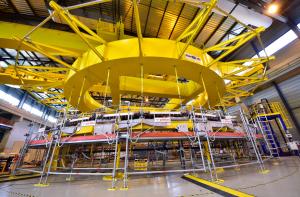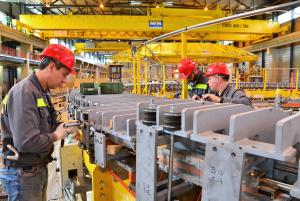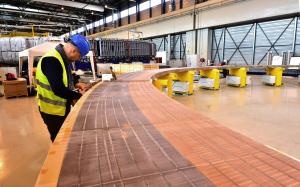On one of the circular platforms on the southern end of the silent, clean and temperature-controlled facility, a double pancake sits, still attached by 24 lifting points to the circular spreader beam that has just moved it from the stacking station.
A few metres away, technicians are busy assembling the vacuum containment vessel—the "mould"—that will enclose the double pancakes throughout the lengthy and delicate resin impregnation process.
"During impregnation, we inject some 600 litres of epoxy resin at a temperature of 55-60 °C through entry ports in the mould," explains Gian Battista Fachin of the European Domestic Agency, who works in the facility where Europe is fabricating the four largest ITER poloidal field coils. "At that temperature the resin is as liquid as water and easily penetrates through the fiberglass wrapping of the double pancake."
Once extra pressure has been applied inside the leak-tight mould to insure that all micro spaces are properly filled, the resin's temperature is ramped up first to 100 °C for a few hours of "gelling," then to 140 °C for a full day and a half of "curing." By then, the resin has become rock solid and the shining white double pancake has turned into a massive block the colour of caramel.
The resin impregnation process was tested and validated on a "dummy" conductor winding that is presently stored at the far end of the building.
"We learned a lot from the dummy, right from the beginning operations that began in November 2015," confirms Gian. "We established metrics and procedures, refined bending parameters, impregnation and injection durations ... everything a dummy is for."
The dummy is a perfect replica of an actual double pancake for the 17-metre-in-diameter poloidal field coil #5 (PF5). For reasons of cost however, it is wound from copper conductor rather than from superconducting niobium-titanium alloy.




